Spirit Animals: BUFFALO ABUNDANCE
In the midst of the lowing of the herd, he takes a break from munching grass and saunters over to a bare patch of earth. The sun is rising and his breath is made visible by the steam that drifts from his nostrils like tendrils of smoke. His head sways ever so slightly as he walks, the bulk of his shoulders clearing the way as members of the herd part to allow passage. At the wallow he comes down to his front knees and the rest of his mass falls with a “thud” into the dirt. He rolls to one side pushing his entire body into the depression stirring up dust and frost at once. His grunts join into the contended conversation of the herd.
The buffalo spirit animal is a precious beast for so many reasons, some commonly known and others less so. What we most often call a “buffalo” is officially called the “American Bison”. There is only one other species of bison on earth, the European Bison. Both are considered ecologically extinct and the European Bison has come even closer than the American Bison to complete extinction. Bison are more closely related to cows than to actual buffalo, but in answering the question “what does bison mean?” this exploration will use the names interchangeably.
Abundance
Any study of North American history includes the grievous chapter on the decimation of the buffalo. In less than 70 years, the population of American Bison was brought from a reported 30-60 million to less than a mere 2,000 in 1889. This mass extermination was a gluttonous move by European settlers to win the west, a deliberate tactic to deprive the Native people of their livelihood. A number of Native Americans tribes relied entirely on the buffalo for food, clothing, tools, shelter, and more. They used every part of the buffalo in their daily life. Buffalo symbolism is directly tied to the idea of abundance because they literally offered an abundance of goods to the people that hunted them.
Freedom
Through various efforts, the buffalo has recovered to somewhere between 500,000 to 1 million individuals today, but the species is considered ecologically extinct because they no longer are able to range their native habitat like they evolved to do. They are kept in small parks and buffalo that wander out of the boundaries are shot. Did you know that wild bison are routinely rounded up and excess members are sent to slaughter? The plight of the buffalo today is strikingly similar to that of the wild mustang. The meaning of buffalo is closely linked to our ideals of freedom and how that freedom actually looks in practice.
Do you feel as if you have enough room to roam? Is someone or something curbing your range? Buffalo spirit animals roam the space they are given, but can be tough on fences. If you find yourself testing the boundaries of a relationship or circumstance, it may be time to focus on an area of your life where you have space to take more liberties.
A Keystone Species
Bison are known as a “keystone” species in that they have an impact on their environment that is disproportionately larger relative to their numbers. They affect the distribution of grasses, the way fire moves throughout the prairie, the cycle of nutrients, and the composition of grass and wildflower species. Their hooves aerate the soil which helps the plants better uptake air and oxygen for faster growth. Buffalo wallows are bare patches of dirt where they frequently roll. These round holes create vernal pools during spring rains which serve as mini oasis for wetland species of plants. The wallows remain in undeveloped areas for up to 125 years after buffalo have been removed from the land.
Ferruginous hawks used to create their nests entirely out of bison bone, fur, and dung. Prairie dogs preferred to colonize in areas grazed by buffalo because they could spot predators better in the shorter grasses. A whole host of animals from black-footed ferrets to burrowing owls to foxes rely on prairie dogs as a food source.
Bison not only provided a valuable source of sustenance for grizzly bears and wolves, but also for scavengers such as coyotes, eagles, hawks, and vultures. When their carcasses were left to rot, they would add enough nitrogen to the soil to make it 2-3 times more rich than the surrounding grassland. Even their urine mobilized nitrogen quicker than natural processes and added fertilizer quickly into the ecosystem.
Regardless of the fact that the buffalo is a key player in grassland ecosystems, they are also a part of a herd. Like any herd animal they find safety in numbers and their habits and days are affected by the movement of the herd. Buffalo spirit animal is a reminder that you are at once a critical component of the world AND just a member of the herd. It is important not to get too overblown in your own importance, and to plainly be yourself. Contributing to and participating in the whole is key.
By simply doing what they do, buffalo create variety and abundance wherever they go. Are you able to offer the same gift to the world? If we all could aspire to be so generous, the world would be a better place. Consider if your actions are contributing to the whole are taking from it. How can you tip the scales so that you are a source of grace for others while still standing in your strength?
Strength and Conflict
Buffalo are incredibly powerful animals that weight over 2,000 pounds. They can run up to 35 miles per hour and cross rivers over a half a mile wide. They easily lead barbed wire fences. In the winter they survive by pushing the snow from the grass using their massive heads. Built to survive warm summers and cold winters, they are at home in the stark, open landscape of the grasslands. They will fend off predators using their bulk and horns.
Buffalo spirit animals can lend us the strength to stand our ground, but they remind us not to crash around like a bull in a china shop. Only 5-10% of challenges between bulls lead to actual fights. The bulls compete for females by butting heads. They have special boney struts that reinforce their inner and outer skull as well as a thick matt of hair on their forehead to protect them from the force of the blows. This reminds us of the benefit of being “thick headed”. Sometimes it is necessary to know your truth and not give in to the shoves of others. Do be mindful although, because bulls easily gore their opponents by slipping off to the side. Remember that going straight on may leave you vulnerable.
Gratitude
Buffalo symbolism is also linked to giving thanks much in the same way as turkey spirit animal. When White Buffalo Calf Woman came to the Lakota people she did so with the teaching of right action and right prayer. Giving thanks was a part of her teaching. When considering the meaning of buffalo, remember that you are both the buffalo and the ecosystem that profits from their action. You have the opportunity to spread abundance wherever you go as long as you stay true to who you are AND now is the time to give thanks for the myriad of ways that the Divine brings abundance into your life.
Just now scientists are beginning to understand the immense impact that buffalo had on the vast grasslands that once covered the North American continent. They are just now seeing the connections between buffalo and their environment. All along, people who lived off the land and off the flesh of the buffalo understood that all was connected. They honored these connections and with an deeper understanding of the medicine of buffalo spirit animal so can we.
Want to learn more about spirit animals?
Visit the Spirit Animal Guide
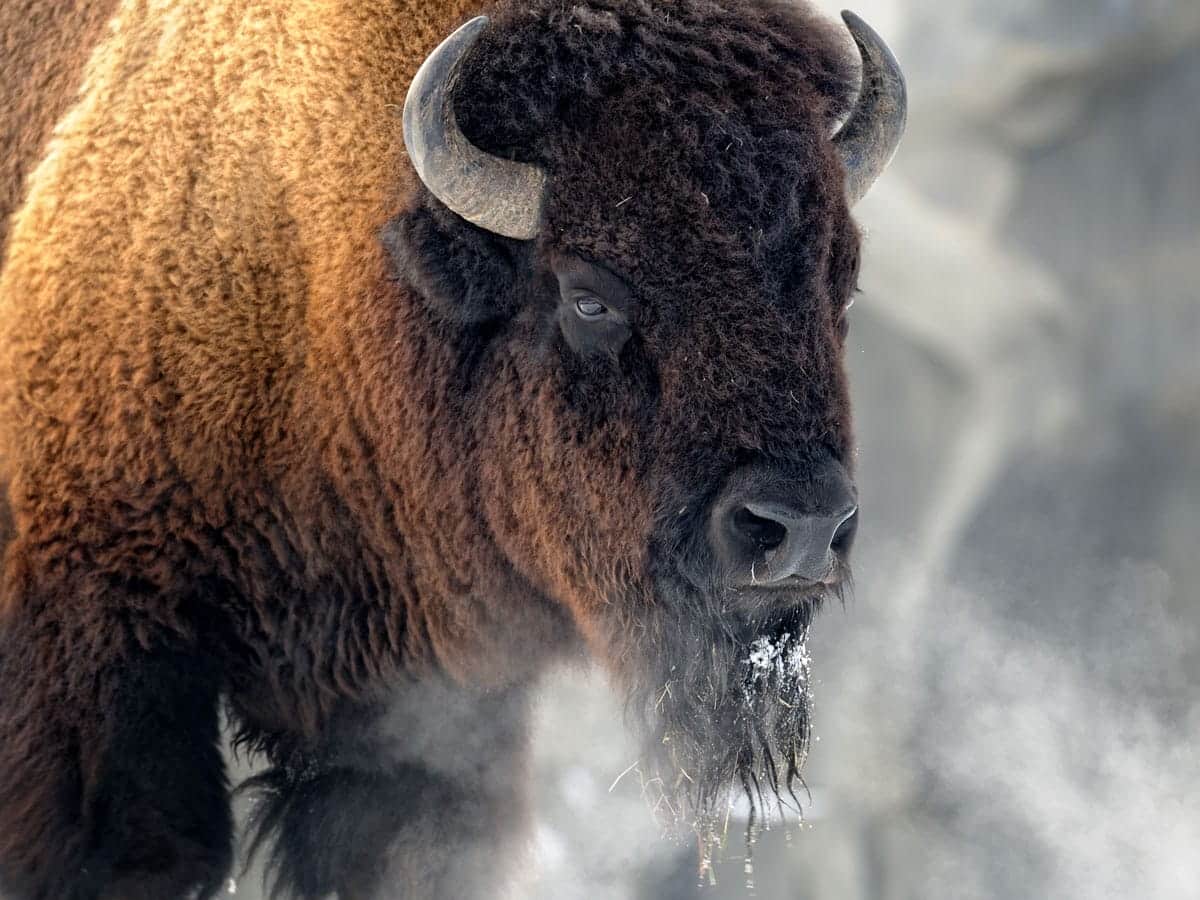

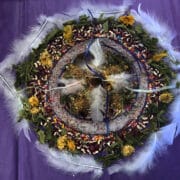
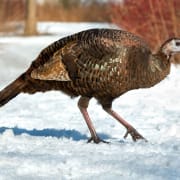
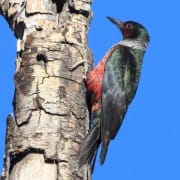


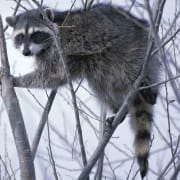




Thank you for guidance and information. I stumbled upon your website today looking for further information as I had a visit from the Bison a few nights ago.
You are most welcome Ian. Lucky you to meet the Bison in your dreamtime!
Thank you for this. I’m 18 right now and I had my first encounter with the bison on a spiritual journey when I was around 9 I think. I’ve always felt a connection to them but I never actually thought to look up what the spirit form was. I just let the energy of it move around me freely. This was very enlightening. Thanks again.
You’re most welcome Max! I’m glad to hear that your relationship with bison spirit animal continues to unfold and bare enlightening fruit for you. That is one of the things I love most about our relationships with spirit animals, that they grow and evolve and provide continual support. Many Blessings to You, Stacey
Thanks for this page. I know the story of the white buffalo thanks to Google and you. A white buffalo appeared to me while I was walking in nature the other day, this is a peaceful place that I have been drawn to almost daily since last sept.2015. I fist saw a flash of silverish blue light near me then the light quickly when about 25yards from me and a white buffalo or bear appeared in full view then vanished, my husband took video and pictures. Normally I would be frightened if something like this happened, but I feel so at peace in this area, I’m a Christian so I don’t want to dabble in the wrong area spiritually, but I know what I saw, and this place used to be where native americans used to live. I have been shown many little things at this beautiful place. Should I keep going there or not? I only ask, not because I’m scared but because I’m not used to seeing super natural things,and I’m wondering why they are being shown to me??thanks so much for listening.
Hello Alissa, This is one of the great mysteries of God and the cosmos. Why do people have mystical experiences and why do they appear in the way they do? I cannot answer this, but I can say that more important than the vision itself is the effects of the vision on you. Has the vision drawn you more to love, to kindness, to generosity, to love of God? St. Teresa of Avila teaches that the way we know that a vision comes from a divine source is to watch the effects it has on our soul. I talk about this in detail in my Seeking Spiritual Guidance class. St. Teresa says that if there are no effects that draw us to being more virtuous then we should simply let the visions be and go on about our sacred work. Sit with this teaching and see how it fits for you. Blessings to you on the path, Stacey
Thank you for you beautiful and thoughtful description of the buffalo. In my dream last night a huge buffalo let me rub his forehead and nose and pet his shoulders. His coat was so thick it was almost like a mane. He was very gentle and warm. I still feel it’s presence. Thanks for helping me understand his presence in my dream. Alison
You’re most welcome Alison. I’m so glad to connect in to the presence of buffalo through your telling of your dream. I can imagine the solace of it all. Many Blessings, Stacey
I stumbled upon your post while trying to find some insight on a lucid dream I had last night.
In my dream setting I was crawling up a hill and realized I was dreaming and desired to come face-to-face with my spirit animal. When I crested the hill there was a bison standing across from me.
I was in awe and terrified at the same time. It began charging towards me and wanted to let it overtake me because I knew I was dreaming and was telling myself it couldn’t cause me any actual harm. But right as it reached me my fear overcame me and so I froze it.
It froze in its place and then all around me a town started to evolve. As if in “fast forward” I watched hundreds of years go by as civilization grew up around the frozen bison. Eventually there was a paved plaza built around the buffalo and people were coming to view it as if it were some kind of spiritual landmark frozen into place for all eternity.
When I awoke I had such a feeling of awe and peace and felt that the dream must have some profound meaning for me. I’ve been mulling it over all day.
Hello Bernice, I suspect you’ll be mulling over this one for years and that is a wonderful thing! Profound dreams like this have layers of meaning that unfold like a beautiful blossom continually bringing you the enchanting scent of wisdom. I’ll give you a few places/pieces to start with knowing that more and more will reveal itself to you as you go along. I know I could sit with you for hours or even days decoding the layers of this dream. This is exactly the type of material I work with in my Spiritual Direction sessions. The civilization could be your own history, your own growth over time. The frozen buffalo reminds me of a statue, a memorial of how you changed fear into faith. It could also be seen as eternal gratitude at the center of your being. We experience abundance as coming and going throughout our lives, but ultimately it is a force that never dies. The spiritual concept of abundance goes beyond the material world and taps into the knowing of the infinite nature of the Creator, undying, unyielding and always giving. This could also be a symbol of a milestone for you, a coming into knowing your core values and locking them into place. Hopefully, these give you some good places to start. I’d love an update or your thoughts if you get a chance to send them. Many Blessings, Stacey
[…] Couch, S. (2015, January 23). Spirit animals: Buffalo abundance. Wild Gratitude. Retrieved from https://www.wildgratitude.com/buffalo-spirit-animal/ […]
What about the Wood Bison in N America (Alaska)? Just thought it would be nice if they were referenced in the first section. Perhaps they are part of the N American Bison?
I love this. Just had a dream about holding a baby bison and also just found out I was pregnant.
What does it mean when you dream of a baby bison that wonders into your home & snuggles with you and then the mom shows up and it eventually leaves with her but comes back to snuggke a few more times before I awoke?
[…] to Aphrodite, Artemis, Apollo, Brigid and the Virgin Mary. Solar gods such as Zeus and Brahma, White Buffalo Calf woman and the Celtic deities Belanus and Lugh descend from Heaven disguised as swans. Saraswati rides a […]